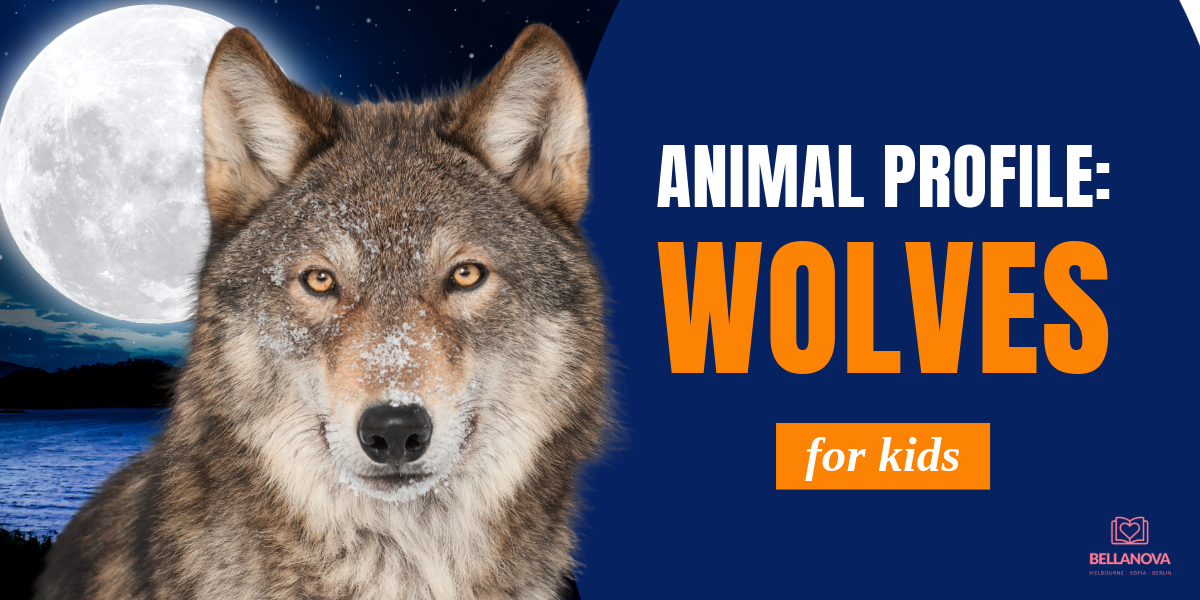
The Ultimate Guide to Wolves: Wolf Fun Facts for Kids!
Wolves are one of the most fascinating and misunderstood creatures in the animal kingdom. Known for their intelligence, social structure, and haunting howls, these majestic animals have captivated the imaginations of people for centuries. On this page we will dive into the world of wolves, exploring different species, their varied habitats, and what they love to eat. Whether you’re a budding wildlife enthusiast or just curious about these incredible animals, you’ll find plenty of cool wolf facts to share with your friends. And don’t forget to check out ‘The Ultimate Wolf Book for Kids‘ for more amazing wolf fun facts!
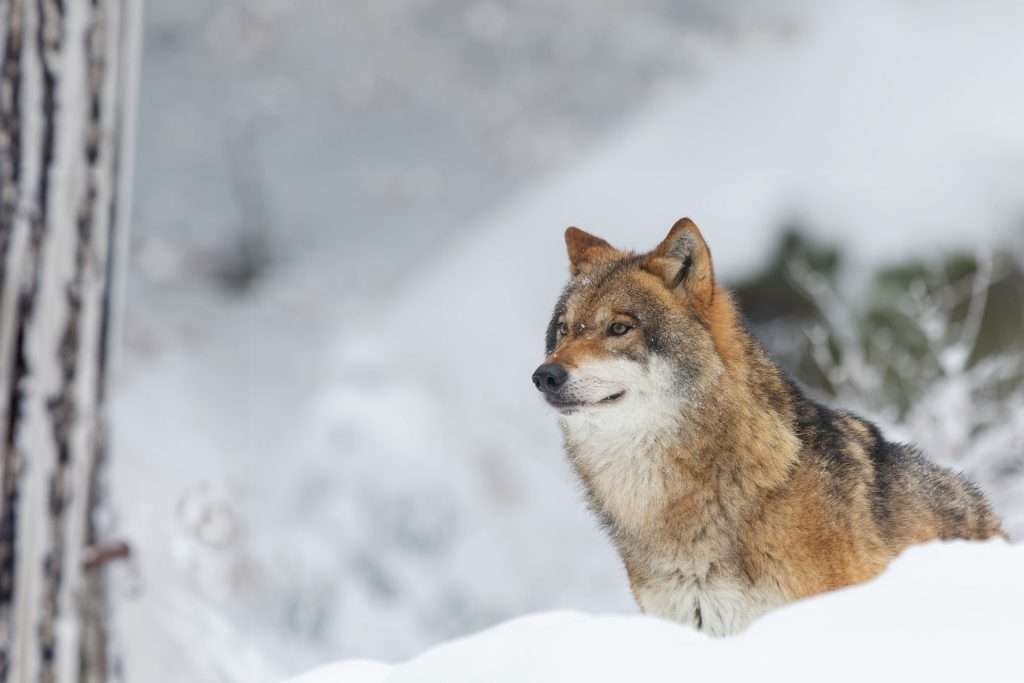
Introduction to Wolves
What Makes Wolves Special?
Wolves are unique for several reasons. First, their social structure is highly organized. They live in packs that often consist of family members, including an alpha pair that leads the group. This hierarchy is crucial for hunting and raising pups. Secondly, wolves are renowned for their intelligence. They use complex communication methods, from vocalizations like howls to body language, to coordinate with their pack. Additionally, wolves have a remarkable sense of smell, enabling them to track prey over long distances. Their adaptability to various environments, from dense forests to arid deserts, also sets them apart.
Why Learn About Wolves?
Learning about wolves can teach us a lot about the natural world and the importance of balance in ecosystems. As apex predators, wolves play a critical role in maintaining healthy populations of other animals, which helps keep their habitats in check. Understanding their behavior and social structures can also offer insights into teamwork and family dynamics. Additionally, wolves have been featured in folklore and mythology across various cultures, enriching our understanding of human history and storytelling. By studying wolves, we not only gain knowledge about these incredible creatures but also cultivate a deeper respect for wildlife and the environment. Plus, knowing cool wolf facts can make you the star of any conversation!
Wolf Fun Facts
Wolves are full of surprises! Here are just a few cool wolf facts:
- Did you know that a wolf’s howl can be heard up to ten miles away? This powerful call helps pack members stay in touch and ward off intruders.
- Another cool wolf fact is that wolves have 42 teeth, which they use to hunt and eat their prey. Wolves are also incredible long-distance travelers, capable of covering over 12 miles in a single day while searching for food.
- In terms of speed, they can run up to 37 miles per hour for short bursts when chasing down prey.
- Interestingly, wolves’ paws are designed for all terrains, featuring webbing between their toes that helps them walk on snow. These fascinating traits make wolves one of the most adaptable and resilient animals in the wild.
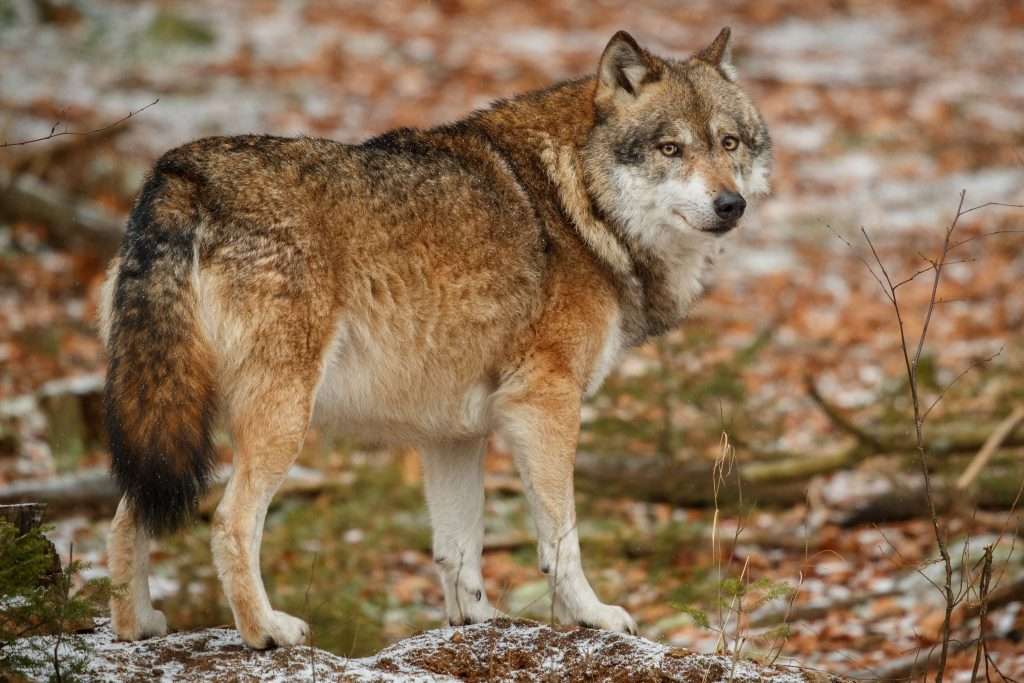
Different Species of Wolves
From the dense forests of North America to the icy plains of the Arctic, these majestic creatures roam far and wide. Each species of wolf has its own unique traits and adaptations that help it thrive in its natural habitat. Let’s take a look at a few of the most famous ones.
Gray Wolves: The Most Common
Gray wolves, also known as timber wolves, are the most widespread and well-known wolf species. They can be found across North America, Europe, and Asia. Gray wolves are highly adaptable, thriving in diverse habitats such as forests, tundras, grasslands, and even deserts. They are known for their intelligence and complex social structures, often forming tight-knit packs led by an alpha pair. Gray wolves have a varied diet that includes large ungulates like deer and elk, smaller mammals, and occasionally fish. Their fur coloration can range from pure white to black, with various shades of gray and brown in between. These wolves are vital to their ecosystems, helping to control the populations of other animals and maintain ecological balance. Studying gray wolves provides important insights into wildlife conservation and the impact of apex predators on their habitats.

Arctic Wolves: The Snow Survivors
Arctic wolves are a unique subspecies of the gray wolf, perfectly adapted to the harsh conditions of the Arctic tundra. Found primarily in the northern parts of Canada and Greenland, these wolves endure extreme cold, limited food resources, and prolonged periods of darkness. Their thick, white fur provides excellent insulation against freezing temperatures and helps them blend into their snowy environment. Arctic wolves are slightly smaller than their gray wolf cousins, with shorter snouts and ears to minimize heat loss. Their diet consists mainly of muskoxen, Arctic hares, and caribou, which they hunt in small packs. Unlike other wolves, Arctic wolves may travel great distances to find food, as prey is scarce in their icy domain. These resilient animals showcase the incredible adaptability of wolves and highlight the importance of understanding and protecting diverse wildlife in various ecosystems.
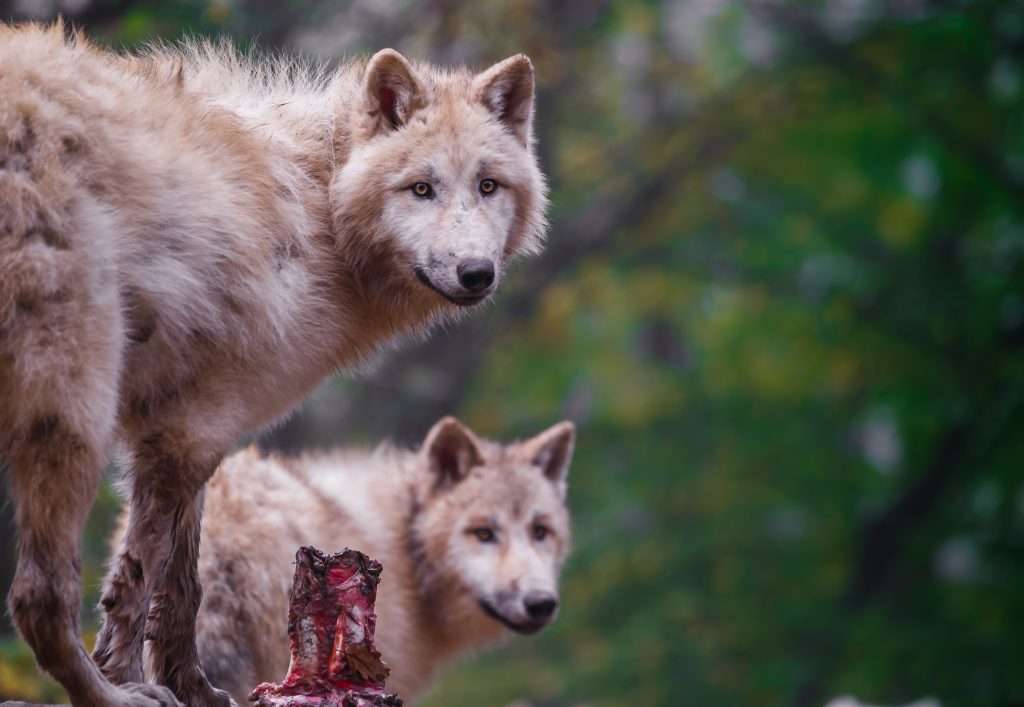
Red Wolves: The Rarest
Red wolves are one of the rarest and most endangered wolf species in the world. Native to the southeastern United States, these wolves once roamed vast territories but now face severe population declines due to habitat loss and human conflict. They currently only exist in the wild in a protected area of North Carolina.
Red wolves are smaller than gray wolves, with a distinctive reddish-brown coat that helps them blend into their forested surroundings. They primarily hunt small mammals, such as rabbits and rodents, but will also eat deer if available. Conservation efforts have been underway to save red wolves, including captive breeding programs and reintroduction initiatives. Despite these efforts, their numbers remain critically low in the wild. Learning about red wolves brings attention to the urgent need for wildlife conservation and the importance of protecting endangered species. By understanding the challenges they face, we can better appreciate these unique animals and support efforts to ensure their survival.
Where Wolves Live
Forests and Mountains
Forests and mountains are prime habitats for many wolf species, particularly gray wolves. These environments provide abundant cover, diverse prey, and a variety of terrains that support the wolves’ hunting and living needs. In dense forests, wolves can find deer, elk, and smaller mammals, which make up a significant portion of their diet. The cover of trees also offers protection from harsh weather and human activity. Mountainous regions, with their rugged landscapes, offer a different set of advantages. Wolves in these areas can hunt mountain goats and sheep, using their agility and endurance to navigate steep slopes. The elevation also provides vantage points for spotting prey and potential threats. These diverse habitats highlight the adaptability of wolves and their ability to thrive in different environments. Understanding where wolves live helps us appreciate their role in maintaining ecological balance in various landscapes.
Deserts and Tundras
Wolves are incredibly adaptable and can even thrive in extreme environments like deserts and tundras. In deserts, such as those in the southwestern United States, Mexican gray wolves have adapted to the arid conditions. They rely on a diet of smaller mammals, birds, and sometimes reptiles, and they often travel long distances to find water and food. Their lighter fur helps them blend into the sandy landscape and reflects the intense sunlight.
On the other hand, tundras present a different set of challenges. Arctic wolves are well-suited for the cold, barren expanses of the northern tundras. Their thick, white fur provides insulation against freezing temperatures and camouflage in the snow. Food sources in the tundra are scarce, so Arctic wolves may hunt larger prey like muskoxen and caribou, and they can endure longer periods without food. Studying these wolves in such harsh environments highlights their remarkable resilience and adaptability.

Urban and Rural Areas
While wolves are typically associated with wild, remote areas, they are increasingly found near urban and rural environments. This shift is often due to habitat loss and the search for food. In rural areas, wolves may come into contact with livestock, leading to conflicts with humans. However, these areas can also provide ample prey, such as deer and smaller mammals, making them attractive for wolves.
Urban fringes present a different challenge. Wolves in these areas must navigate human infrastructure while avoiding direct interactions with people. They tend to be more nocturnal in urban settings to minimize encounters. Despite the challenges, some wolves have adapted remarkably well, finding pockets of green spaces and corridors to move through. Understanding how wolves adapt to urban and rural areas underscores the importance of coexistence strategies and conservation efforts, ensuring these magnificent animals can thrive alongside human populations.
What Wolves Eat
Carnivorous Diet
Wolves are primarily carnivores, meaning their diet mainly consists of meat. They are skilled hunters, often working in packs to take down large prey like deer, elk, and moose. These large animals provide substantial meals that can sustain a pack for several days. Wolves are also opportunistic feeders and will eat smaller mammals, such as rabbits and rodents, when larger prey is scarce. In some regions, they may even consume fish and birds.
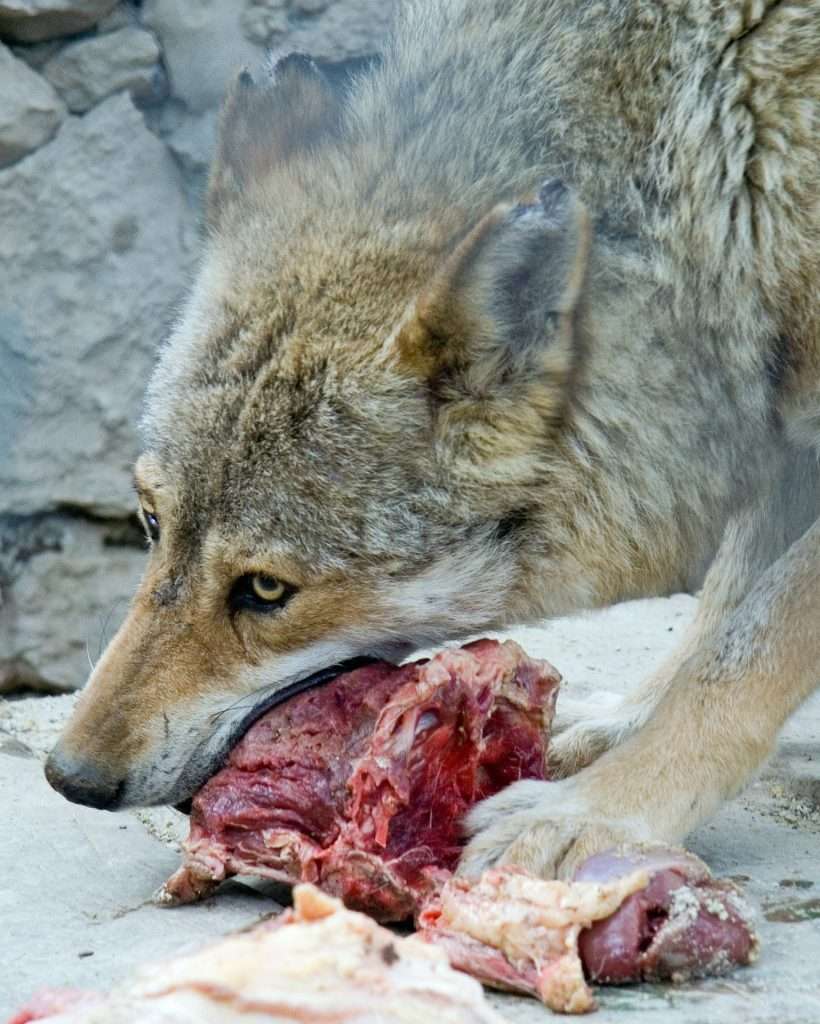
Wolves have strong jaws and sharp teeth designed for tearing meat, and they can eat up to 20 pounds in a single meal. Their hunting strategy often involves stalking their prey and using their endurance to chase it over long distances. This carnivorous diet is essential for their energy needs, especially given their active lifestyle. Understanding what wolves eat helps us appreciate their role as apex predators and the impact they have on maintaining the balance in their ecosystems.
Hunting Techniques
Wolves are master hunters, employing a variety of techniques to secure their meals. One of the most important aspects of their hunting strategy is teamwork. Wolves hunt in packs, which allows them to take down prey much larger than themselves. They use coordinated tactics, with some wolves driving the prey towards others lying in wait. This level of cooperation increases their chances of a successful hunt.
Another key technique is endurance hunting. Wolves can run at moderate speeds for long distances, wearing down their prey over time. This stamina-based approach is particularly effective in open terrains where prey cannot easily escape into cover. Wolves also use their keen senses of smell and hearing to locate and track animals, often following them for miles before making a move.
In winter, wolves may take advantage of deep snow, which slows down their prey, making it easier to catch. These sophisticated hunting techniques showcase the intelligence and adaptability of wolves in the wild.
Scavenging and Sharing
While wolves are adept hunters, they are also opportunistic scavengers. They won’t hesitate to feed on carrion—animals that have already died from other causes. This scavenging behavior helps wolves survive in times when hunting is less successful or prey is scarce. By consuming carrion, wolves play an important role in the ecosystem by cleaning up dead animals and preventing the spread of disease.
Wolves are also known for their sharing behavior within the pack. After a successful hunt, wolves will bring back food to the den to feed pups and other members who did not participate in the hunt. This sharing reinforces social bonds and ensures the survival of the entire pack. Even the alpha pair, which leads the pack, will share food with lower-ranking members. This communal approach to food highlights the importance of cooperation and social structure in wolf packs, contributing to their overall success as a species.
Conclusion and Extra Resources
Importance of Wolves in Nature
Wolves play a critical role in maintaining the health and balance of ecosystems. As apex predators, they help control the populations of herbivores like deer and elk, preventing overgrazing and promoting biodiversity. This process, known as trophic cascading, has far-reaching effects on the environment. For example, by managing the number of grazing animals, wolves indirectly support the growth of vegetation, which in turn benefits other wildlife and helps prevent soil erosion.
Wolves also influence the behavior of their prey. In areas where wolves are present, herbivores tend to avoid certain areas, allowing plant life in those regions to flourish. This dynamic creates a more balanced and sustainable ecosystem. Understanding the importance of wolves in nature emphasizes the need for conservation efforts to protect these incredible animals. By preserving wolf populations, we help maintain the intricate web of life that supports diverse and healthy ecosystems.
Learn More Wolf Fun Facts with The Ultimate Wolf Book for Kids!

If you’re eager to dive deeper into the world of wolves, ‘The Ultimate Wolf Book for Kids‘ is the perfect resource. Packed with engaging facts about wolves, stunning photographs, and fun activities, this book provides a comprehensive look at these magnificent creatures. You’ll learn more about different wolf species, their habitats, social behaviors, and the crucial role they play in ecosystems. The book is designed to be both educational and entertaining, making it ideal for young wildlife enthusiasts. Whether you’re working on a school project or just curious about wolves, this book has something for everyone. Don’t miss out on this opportunity to become a wolf expert! Order your copy of ‘The Ultimate Wolf Book for Kids’ today and embark on an exciting journey into the wild world of wolves.





